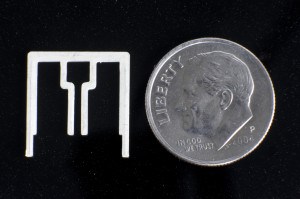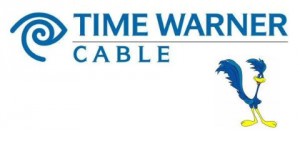Yesterday’s news that Verizon Wireless plans to terminate the grandfathered unlimited data plans of their existing customers, forcing them to choose from a range of potentially more expensive shared data plans, would seem to be part and parcel of the cell phone industry’s need to move away from all-you-can-eat data to preserve what little spectrum they have to handle wireless data growth.
AT&T’s Randall Stephenson is on record stating AT&T has been hiking prices because of the imminent spectrum crisis and its inability to manage it with a buyout of T-Mobile:
“We’re running out of the airwaves that this traffic rides on,” Stephenson said. “There is a shortage of this spectrum. The more competitors you have, the less efficient the allocation of spectrum will be. It’s got to change. I don’t think the market’s going to accommodate the number of competitors there are in the landscape.” Stephenson noted AT&T’s data prices have increased 30% since the deal was killed.
“In a capacity-constrained environment we will manage usage-based data plans, increased pricing and managing the speeds of the highest volume users. These are all logical and necessary steps to manage utilization,” Stephenson said about AT&T’s rationing plans.
Over at Verizon Wireless, the announced end of unlimited data carried no such warnings of imminent wireless spectrum doom. In fact, chief financial officer Fran Shammo on Wednesday said Verizon was just fine with spectrum and capacity for at least the next two years, if not longer (underlining ours):
“Well, I think prior to the deal that we announced with the cable companies and the acquisition of spectrum, we were saying that we were going to need a spectrum — we were going to need more spectrum by 2015. With the approval of this deal now, with the AWS, we think we are in very good shape here beyond 2015.
“In addition, the way our 3G spectrum is in individual slices, it is going to be very efficient for us to take slices out and re-appropriate that to the 4G technology. So I think that through that spectrum efficiency, also I think that there will be some help from the manufacturers in getting more equipment out there that utilizes spectrum more efficiently, although I don’t think that solves the problem, the industry is going to need more spectrum in the future because of the way that we see the guide path of consumption. But I think right now, we are in pretty good shape for at least the next several years.
[…] “So from a spectrum perspective, I think we are absolutely fine.”
In fact, Verizon Wireless plans to reduce its spending on infrastructure projects designed to expand and enhance its wireless network, starting with its 3G service. Frammo (underlining ours):
“And now what you’re seeing is, if you will, a discontinued investment in 3G. Now we will have to continue to invest in that 3G from a maintenance and reliability perspective because we still have 90 million customers on that, but no more capacity or expansion of the 3G network. Our effort is going into 4G now and what I would say to you is look at Verizon on a total capital basis and I would say flat to slightly down. If you look at the components, what you will see is wireless decreased $850 million in the first quarter and that was because of the 3G buildout last year and not this year. But I think on a year-over-year basis, you could look to flat to down and that trend should continue.”
So what are Verizon’s primary goals in the near future? Increasing revenue. Frammo (underlining ours):
“So obviously, our goal is to increase cash flow. We came out of the first quarter with a $1.7 billion increase in our cash flow year-over-year, managing that CapEx. Our dividend policy is extremely important to us.“
Verizon Wireless handed out this statement this morning regarding the imminent demise of unlimited data:
“As we have stated publicly, Verizon Wireless has been re-evaluating its data pricing structure for some time, Customers have told us that they want to share data, similar to how they share minutes today. We are working on plans to provide customers with that option later this year.
“We will share specific details of the plans and any related policy changes well in advance of their introduction, so customers will have time to evaluate their choices and make the best decisions for their wireless service. It is our goal and commitment to continue to provide customers with the same high value service they have come to expect from Verizon Wireless.”
[flv width=”480″ height=”290″]http://www.phillipdampier.com/video/WWLP Springfield Verizon Wireless Eliminating Unlimited Data 5-16-12.mp4[/flv]
WWLP in Springfield, Mass. explains to viewers the end of “unlimited data” from Verizon Wireless is near. (1 minute)


 Subscribe
Subscribe










